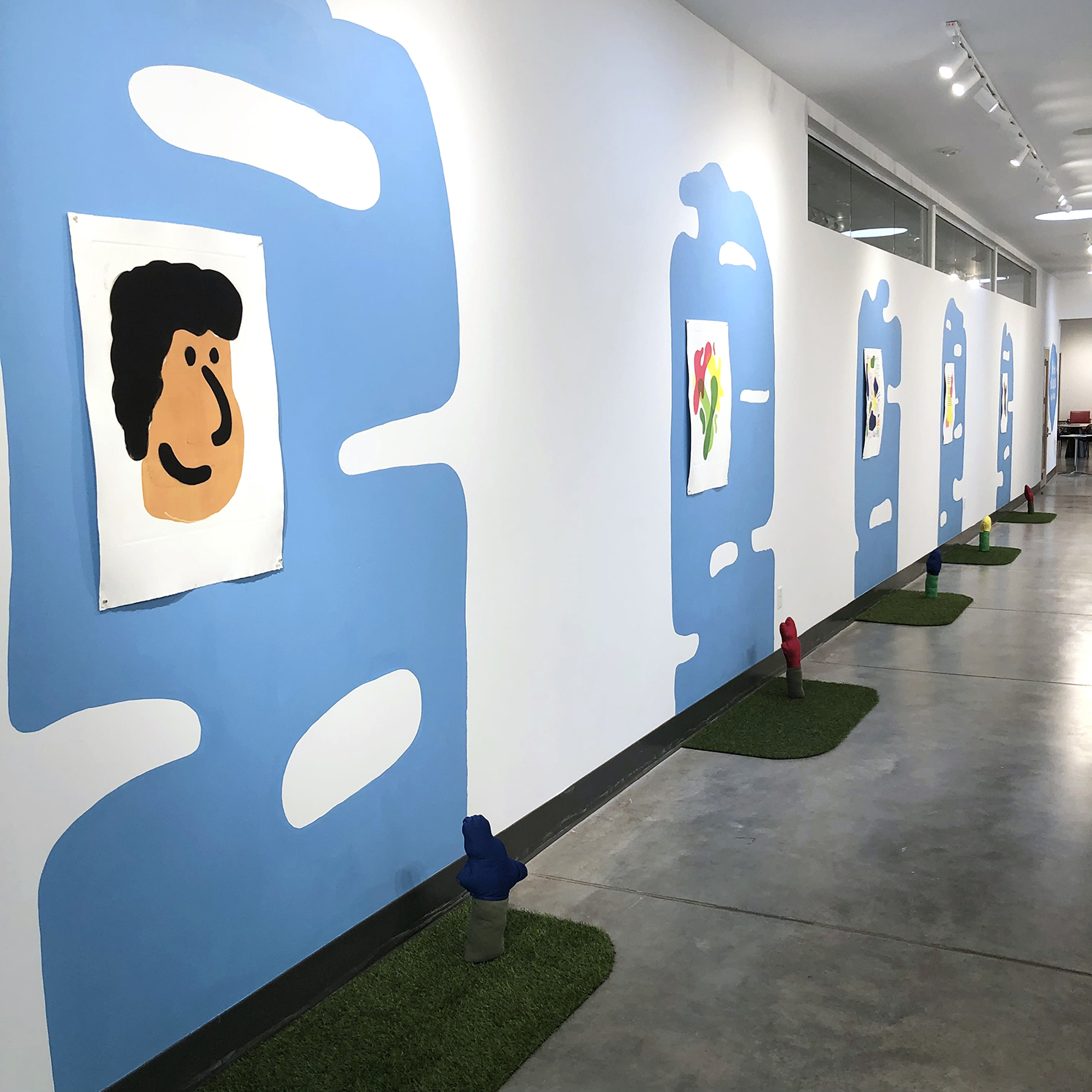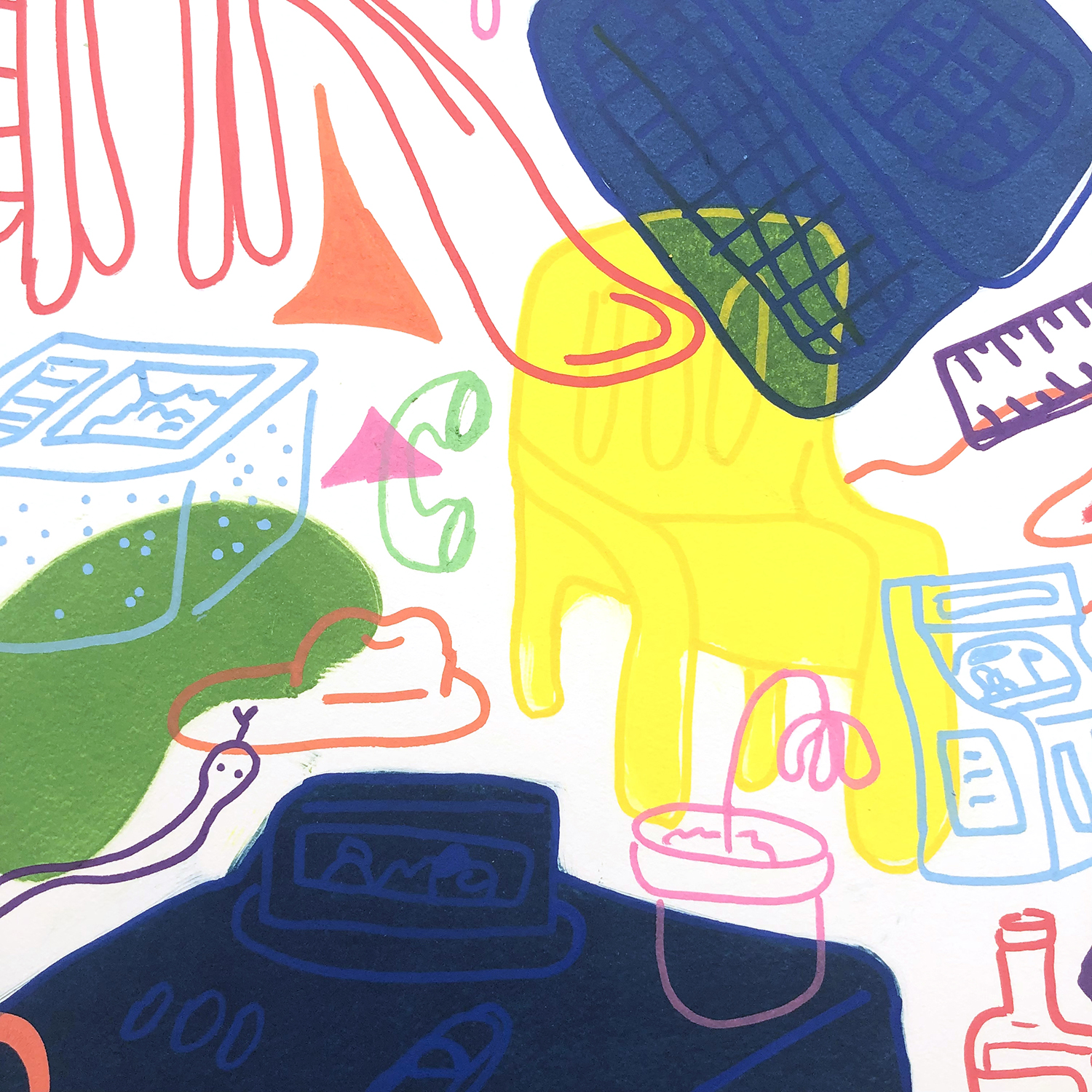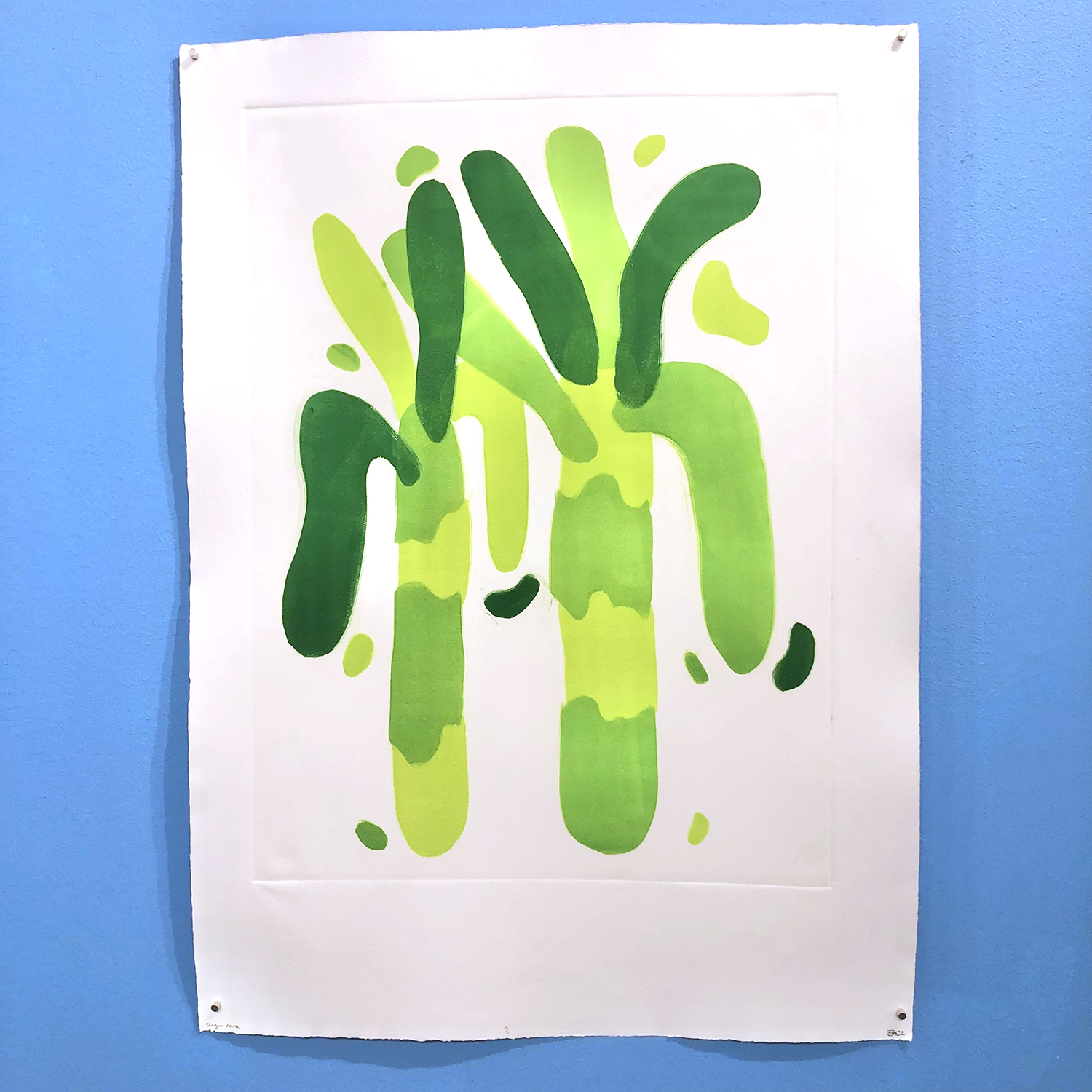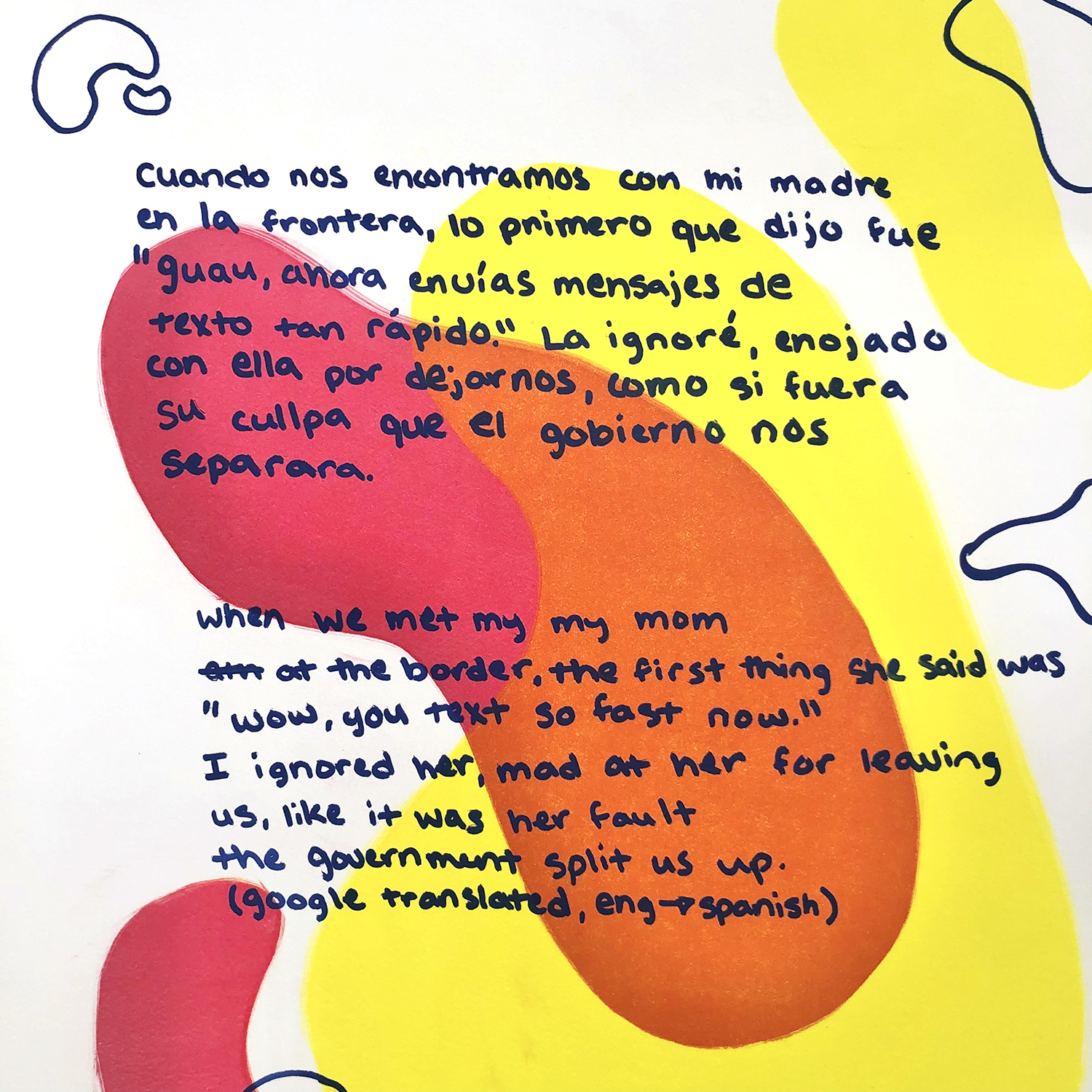In this exchange between Anika Schneider and myself, we reflect on the group exhibition, Smoke and Ground, curated by Adrienne Doyle at Public Functionary. This show was on view October 8 – November 6, 2022.
Artists included: Alexandra Beaumont, Avery Weiler, Leon Valencia Currie, Maiya Lea Hartman, Margaret Vergara, Satya Varghese Mac, Miku, Michael Khuth, Nailah Taman, Nicole Stiegart, nouf saleh, Patricio DeLara, Raye Cordes, Silent Fox, Sabrina Ford.
Check out this reflection in zine format.
—

ALEXANDRA BEAUMONT, “Dancing with Friends 1 – 3” (2022) Various textiles
EM: The details felt like a really key element that ties this group exhibition together, whether that was specific moments in paintings, mindful choices in object construction, or repeated items in collage/assemblage works, etc. what were some of the most striking details to you and why?

PATRICIO DELARA, Figure study on post-it (2022)
AS: For me some of the most striking details were revealed in the shifts of scale between the pieces. Beaumont’s monumental figures danced next to Delara’s study of figures on a post it note, further reducing Delara’s figures within their pastel piece (on view next to the post it). This juxtaposition of a seemingly small detail of a post it note study used something of a very small scale, tacked like a note to the wall, to draw me in closely. Upon turning around and viewing Beaumont’s dancing figures, I had to first step back to take in the details, but then also step forward to understand the various textiles and stitches. This rhythm of stepping closely and stepping back was necessary to unlock the details within the exhibition. Other details that struck me through this process were saleh’s structural wood element and the hard objects embedded within Taman’s piece.

nouf saleh “Goree, Ethiopia” (2022) Cyanotype, watercolor paper, cedar wood sculpture
EM: As the curatorial statement shares, memories and landscape are central to this exhibition, and I know memory has been a key part of your creative practice too. I wonder if there were specific pieces that resonated based on use of memory?
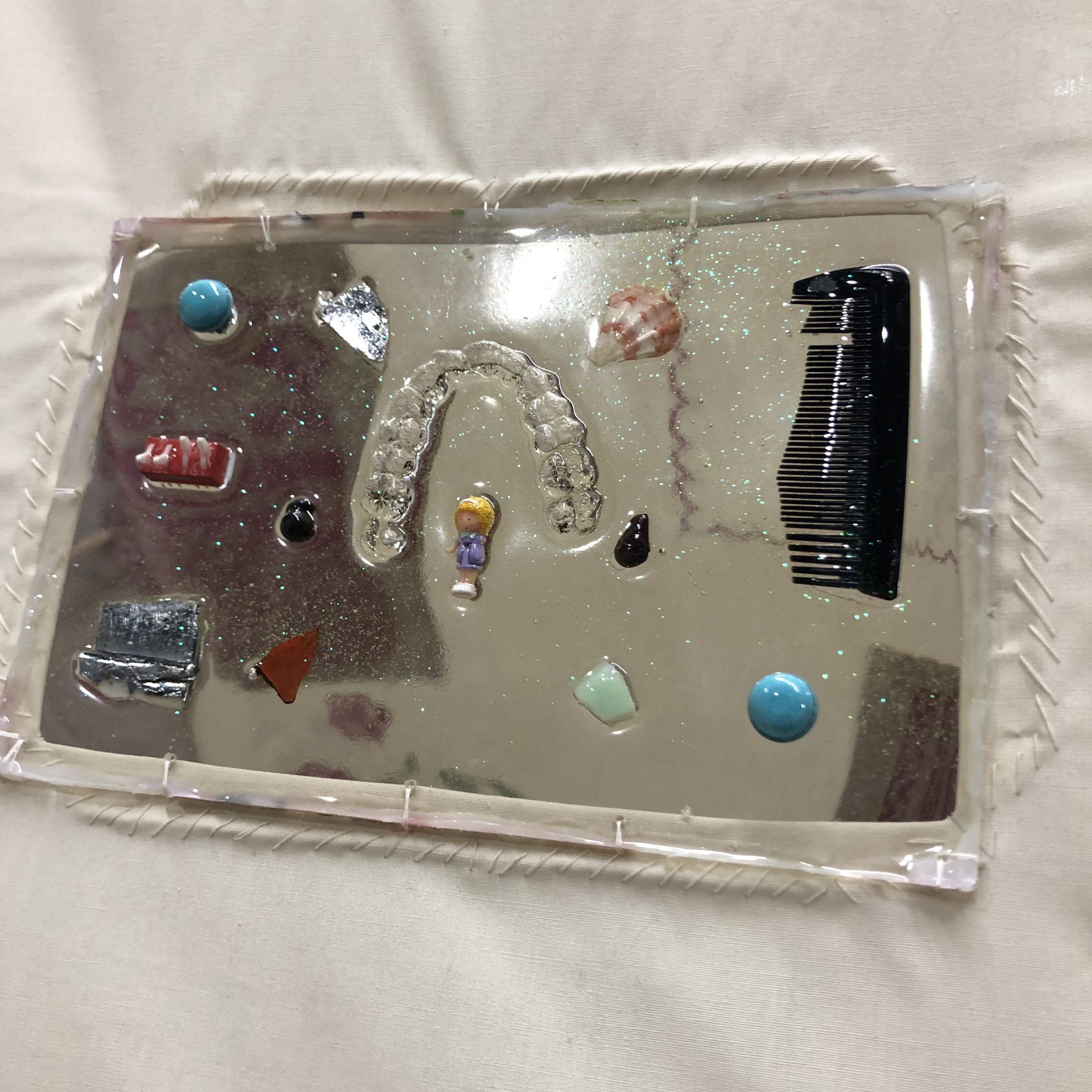
NAILAH TAMAN, “Taeta’s Tabletent” (2022) Ancestral cloth, cherished blanket, found objects, epoxy
AS: Taman’s Teata’s Tabletent and Varghese Mac’s A series of forms to keep our skin intact both especially resonated with me. Taman’s piece, for me, beautifully displays how objects hold memories and can be put away and not thought about but also a stagnant presence in our memories. Like my own work, Taman has recreated this handed down object to explore their own identity in connection to ancestral lineage. Varghese Mac’s piece mirrored how both personal and societal memory functions. Concrete, something initially flexible and changing, can solidify to serve a specific purpose. Our memories also transform and adapt to fit purposeful narratives to understand ourselves. Varghese Mac’s etched images on the concrete are subtle and eroded enough to feel like a deep cultural memory, seeming to suggest how solid concrete will one day crumble following the cycle of memory.

SATYA VARGHESE MAC, “A series of forms to keep our skin intact” (2022) Light etched concrete, iron and titanium oxides, mustard seed oil
EM: Texture was an important formal component across several works, whether is the juicy piled painted borders of Maiya Lea Hartman’s painting, the hanging layered fiber work of Alexandra Beaumont, or the etched concrete of Satya Varghese Mac, among many others. Where did texture stand out? Or was there a different key formal element to you?
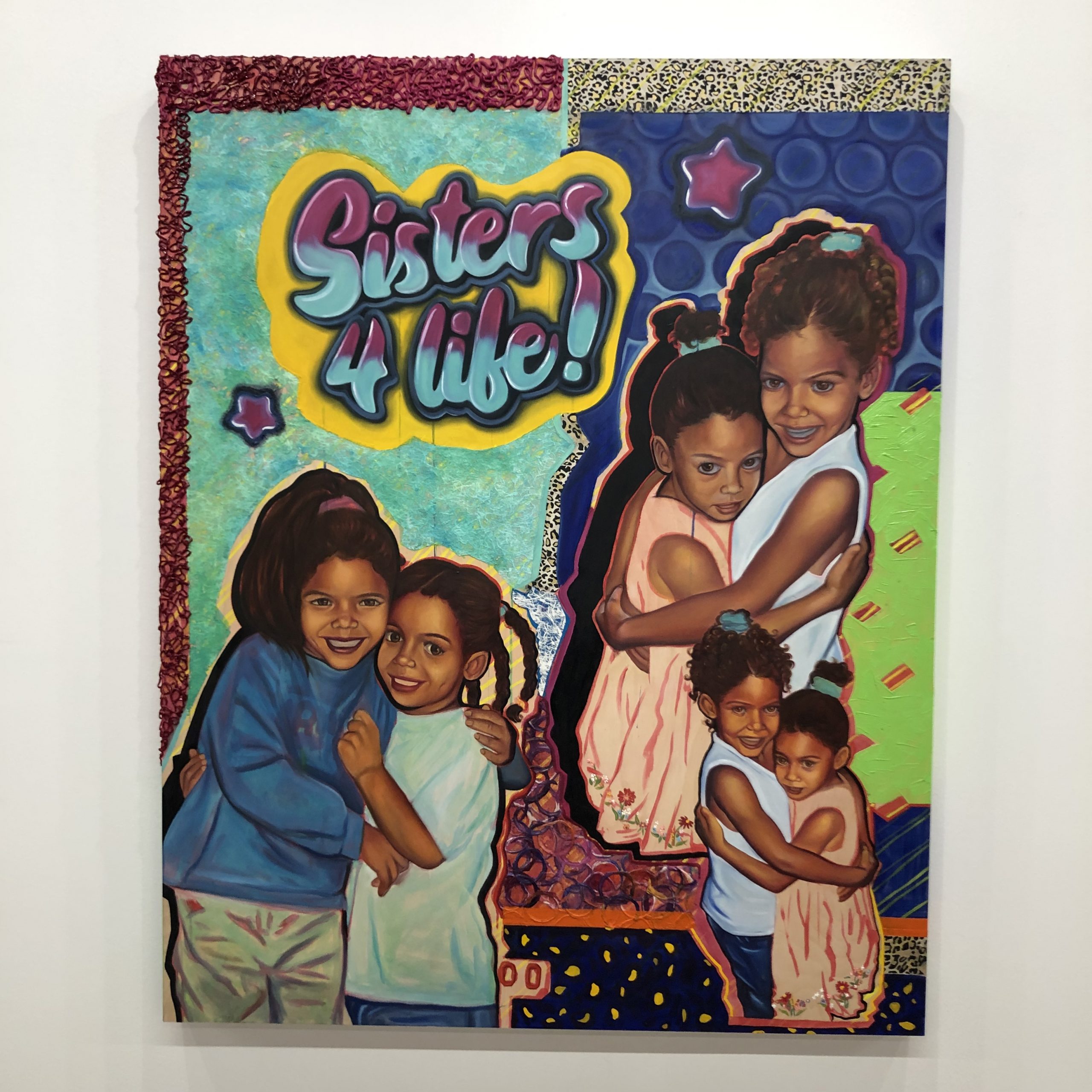
MAIYA LEA HARTMAN, “Sisters 4 Life” (2022) Acrylic, oil, paper on wood pane
AS: Within the exhibition, texture stood out in the woven layered collage like elements of many of the pieces. This served to give the exhibition an overall texture. Many of the pieces seemed to be fitting parts together as a whole and this element served to bring all of the pieces in the exhibition together, whole. Ford’s The Beginning of it All, is a painting rich in surface pattern which brings a textural element into the painting. The painting canvas itself seemed raw and was forced into the frame, embracing wrinkles in the canvas adding an unexpected textural element. Khuth’s photographic collages, Small Ruptures, paired smoothness of skin and a silky blue backdrop with textural wrinkles of fabric and jewelry which emitted the feeling of warm metal on skin. This pairing in the collage reflected many of the textural variations of the exhibition.
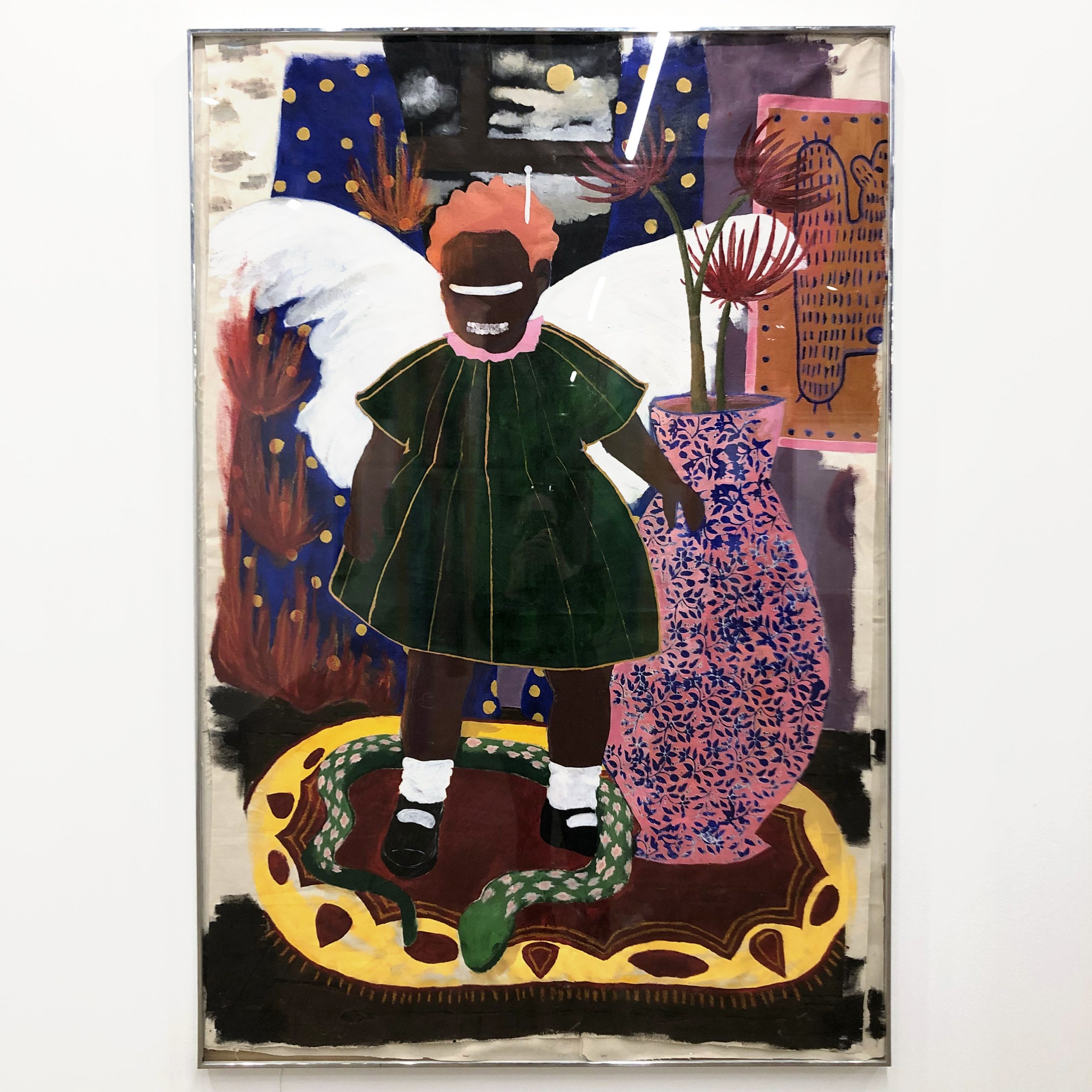
SABRINA FORD, “The Beginning of it All” (2022) Acrylic, oil pastel on canvas
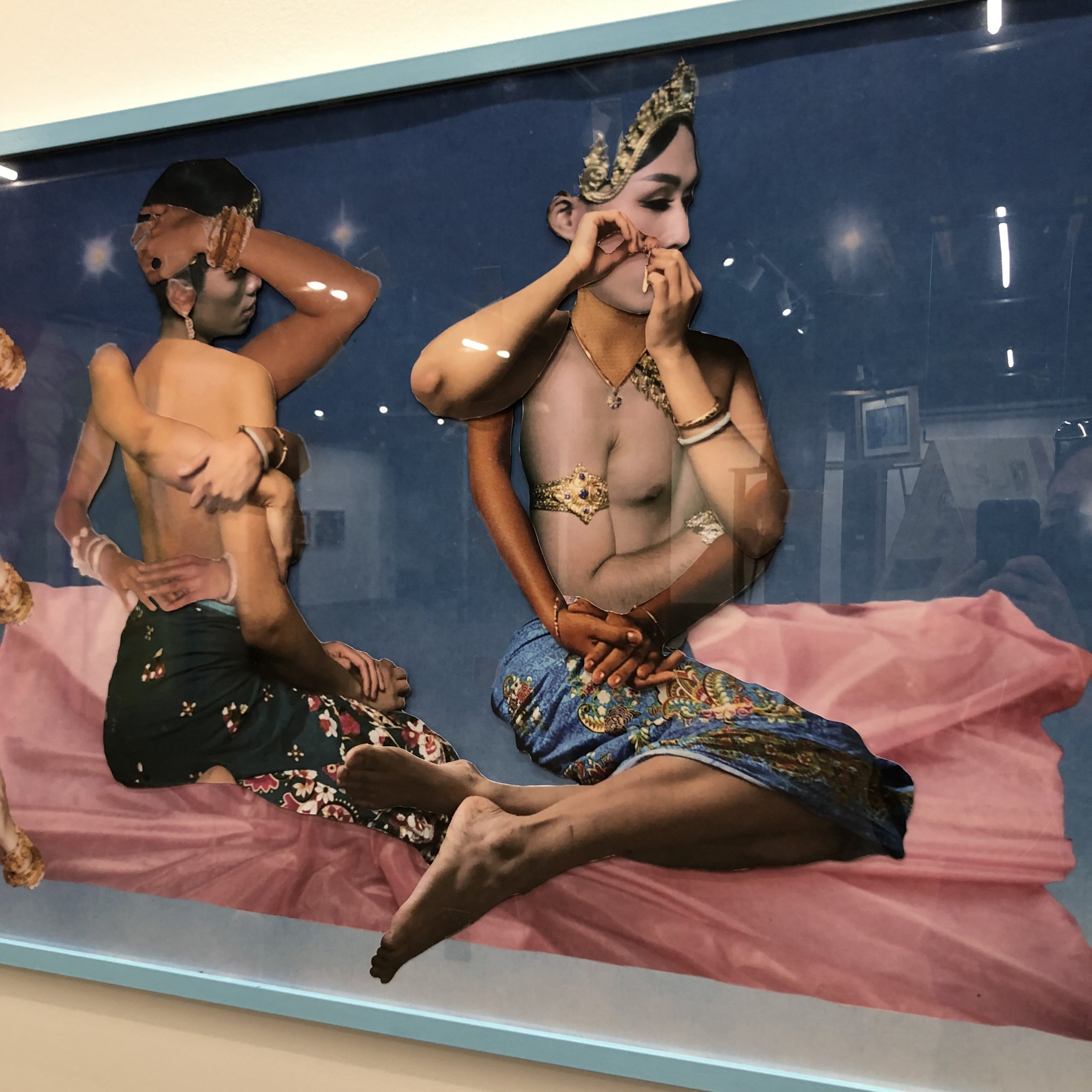
MICHAEL KHUTH, “Small Ruptures” (2022) Paper, tape
Disclosure: I know Anika Schneider from when I was directing the MFA program at MCAD.

